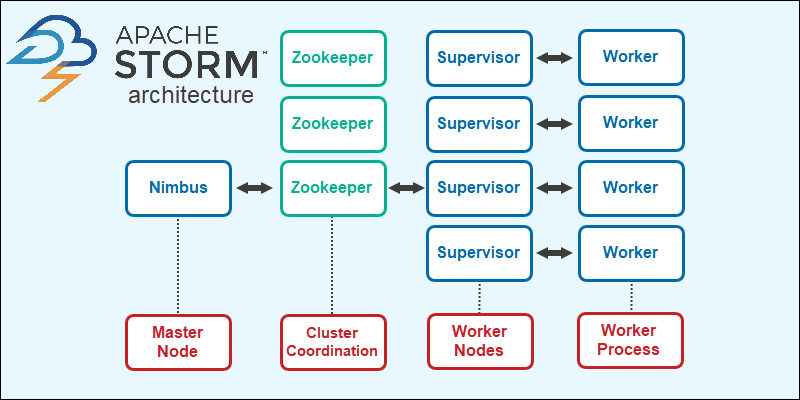What is Apache Storm?
Apache Storm is a distributed real-time big data-processing server. Storm is designed to process vast amount of data in a fault-tolerant and horizontal scalable method. It is a streaming data framework that has the capability of highest ingestion rates. Though Storm is stateless, it manages distributed environment and cluster state via Apache ZooKeeper. It is simple and you can execute all kinds of manipulations on real-time data in parallel.

Apache Storm uses a master-slave architecture with the following components:
Nimbus is the server residing on a single master node.
Supervisors are services running on each worker node.
Workers are single or multiple processes on each node started by supervisors. The workers run parallel data input handling and output the data to a database or file system.
Zookeeper coordinates and manages the distributed data processes.
The architecture diagram shows an example Apache Storm configuration with 4 nodes. Each node has a supervisor process with multiple workers to retrieve and store data in a database or file system.
Why Monitor Apache Storm?
In mission critical environments, even the slightest of deficiencies in the performance of the Apache Storm server if not detected promptly and resolved quickly, can result in irredeemable loss of critical data. To avoid such data loss and to ensure availability of data round the clock, the Apache Storm server should be monitored periodically. For this purpose, eG Enterprise offers a specialized Apache Storm server monitoring model.
By closely monitoring the target Apache Storm server, administrators can be proactively alerted to issues in the overall performance and critical operations of the server, identify serious issues and plug the holes before any data loss occurs.
